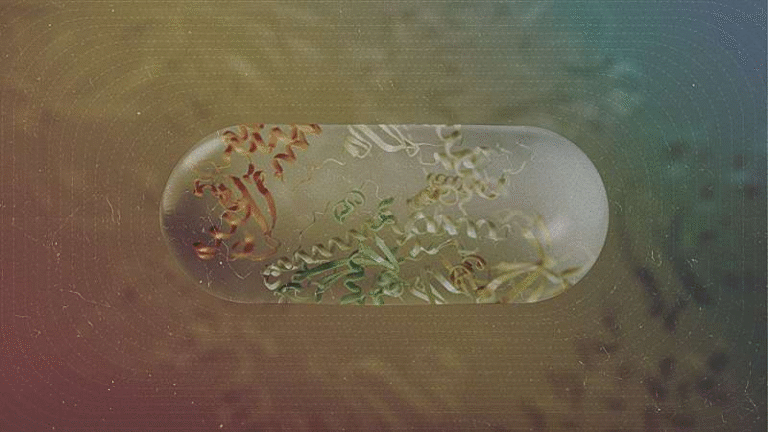Kansas Researchers Discover How Microbial Memory in Soil Shapes Plant Growth and Drought Resilience

A fascinating new study from the University of Kansas and the University of Nottingham has shed light on how tiny microbes living in the soil can “remember” past climate conditions — and how that microbial memory influences how plants grow and respond to stress. Published in Nature Microbiology, the research explores what scientists call legacy effects, meaning the lingering influence of a soil’s history on its current biology and function.
The Idea of Microbial Memory
Every patch of soil holds an entire universe of microscopic life — bacteria, fungi, and other organisms that affect everything from nutrient movement to carbon storage. What this study highlights is that these microbial communities don’t just react to their environment; they can actually retain a memory of past conditions, such as long-term drought or rainfall patterns.
This concept, often referred to as ecological memory, suggests that the behavior and composition of soil microbes today can be shaped by environmental changes that happened years or even decades ago. These “memories” may, in turn, affect how well plants adapt to current stresses like drought.
The Kansas Experiment
To investigate this idea, researchers collected soil samples from six sites across Kansas, a state that conveniently spans a natural gradient from the wetter east to the dry western High Plains. The western regions, being higher in altitude and shielded by the Rocky Mountains, receive less rainfall, providing a natural contrast for studying microbial adaptation to water availability.
The team then conducted the entire experiment at the University of Kansas, working with collaborators at the University of Nottingham. Their goal was to determine how these long-term rainfall histories — or precipitation legacies — influence microbial genetics, gene expression, and ultimately, plant performance.
How the Study Worked
The experiment involved both metagenomic and metatranscriptomic analyses — advanced genetic techniques used to study the microbial community’s DNA and active genes. The scientists wanted to know two things:
- Whether microbes in soils with different rainfall histories show lasting differences in their composition and gene activity.
- Whether those differences influence plant growth and drought response.
To test this, the team conditioned microbial communities for five months, alternating between well-watered and low-water treatments. Even after this period, the microbes that had originated from drier regions retained a memory of drought — their genetic and functional patterns still reflected their original climate.
What They Found in the Microbes
Despite similar levels of microbial diversity, the actual composition of microbes differed substantially depending on the historical rainfall of their home soil.
- Dry-legacy soils had more Actinomycetota and Bacillota, bacterial groups often linked to drought tolerance and spore formation.
- Wet-legacy soils were richer in Pseudomonadota and Acidobacteriota, microbes that thrive in moister environments.
These community differences were more than skin deep. The functional genes present — and even the genes being actively expressed — also varied. For instance:
- Dry-legacy microbes showed higher activity in nitrogen-cycle genes, reflecting adaptations to nutrient limitations typical of arid soils.
- Wet-legacy microbes showed more activity in ion transport and amino acid metabolism genes, which are linked to higher moisture availability.
In total, the researchers found that the precipitation legacy accounted for 14.1% of metagenomic variation and a striking 24.9% of metatranscriptomic variation, meaning that historical climate had a much greater impact on microbial function than short-term watering treatments during the experiment.
Testing Plant Responses
To see whether these microbial legacies actually affected plants, the researchers grew two species:
- Eastern gamagrass (Tripsacum dactyloides) — a native prairie grass that has co-evolved with Kansas soils for millennia.
- Maize (Zea mays) — a domesticated crop, originally from Central America, and a staple of modern agriculture.
The results were striking. The native grass performed significantly better under drought when paired with microbes from dry-legacy soils. It grew larger, showed healthier roots, and developed internal structures that help with oxygen transport — signs of resilience to water stress.
In contrast, corn didn’t benefit as much. Even when paired with drought-conditioned microbes, its performance didn’t improve substantially. This suggested that the co-evolutionary history between native plants and their microbial partners plays a critical role in how well the “memory” translates into real-world benefits.
A Gene That Caught Attention
One particularly interesting discovery was related to the nicotianamine synthase gene. This gene helps plants acquire iron from soil and has also been linked to drought tolerance. Researchers found that plants expressed this gene during drought only when grown with microbes that had a dry memory.
This implies that a plant’s physiological response to stress is not just determined by its own genetics, but also by the genetic memory of the microbes it lives with.
Why This Matters
The implications of this research are far-reaching. In the face of climate change, understanding how soil history and microbial legacy influence plant resilience could transform how we manage agriculture and conservation.
For farmers and agricultural biotech companies, these findings open up new possibilities. If we can identify or even engineer microbial communities with beneficial drought memories, it could improve crop yields and sustainability. The microbial inoculant industry, already worth billions, might now look toward tailoring products that take microbial legacy into account.
However, as the researchers point out, it’s not as simple as transferring microbes from one soil to another. The beneficial effects seem to depend heavily on whether the plant and microbes share a long evolutionary relationship. Crops like corn may need additional breeding or microbial adaptation to take advantage of these legacy effects.
The Bigger Picture: Soil Microbes and Climate
Beyond agriculture, this study adds to a growing body of research emphasizing the critical role soil microbes play in ecosystem resilience. Microbes influence carbon sequestration, nutrient cycling, and water retention — all of which determine how ecosystems respond to environmental stress.
Microbial legacies might even help predict how ecosystems will react to climate change. If soils “remember” long-term climate patterns, that memory could either buffer them against or lock them into certain responses, depending on how well they can adapt to new conditions.
Looking Ahead
While this Kansas-based study offers strong evidence for microbial legacy effects, it also raises new questions:
- How long can microbial memories last under shifting environmental pressures?
- Can these legacies be “reset” by extreme events like floods or wildfires?
- And how do such patterns play out in other ecosystems beyond the Great Plains?
Further research could explore how to harness these microbial traits not just for crops but for restoring degraded lands and enhancing natural drought resistance in grasslands and forests.
In Summary
The University of Kansas and University of Nottingham team has provided one of the clearest demonstrations yet that soil microbes can remember their past — and that memory matters for the plants they support. Even after thousands of microbial generations, the imprint of historical rainfall remains visible in both microbial genes and plant performance.
This discovery bridges microbiology, ecology, and plant science, giving us a deeper appreciation for the hidden intelligence of the soil beneath our feet.
Research Reference:
Precipitation legacy effects on soil microbiota facilitate adaptive drought responses in plants – Nature Microbiology (2025)





